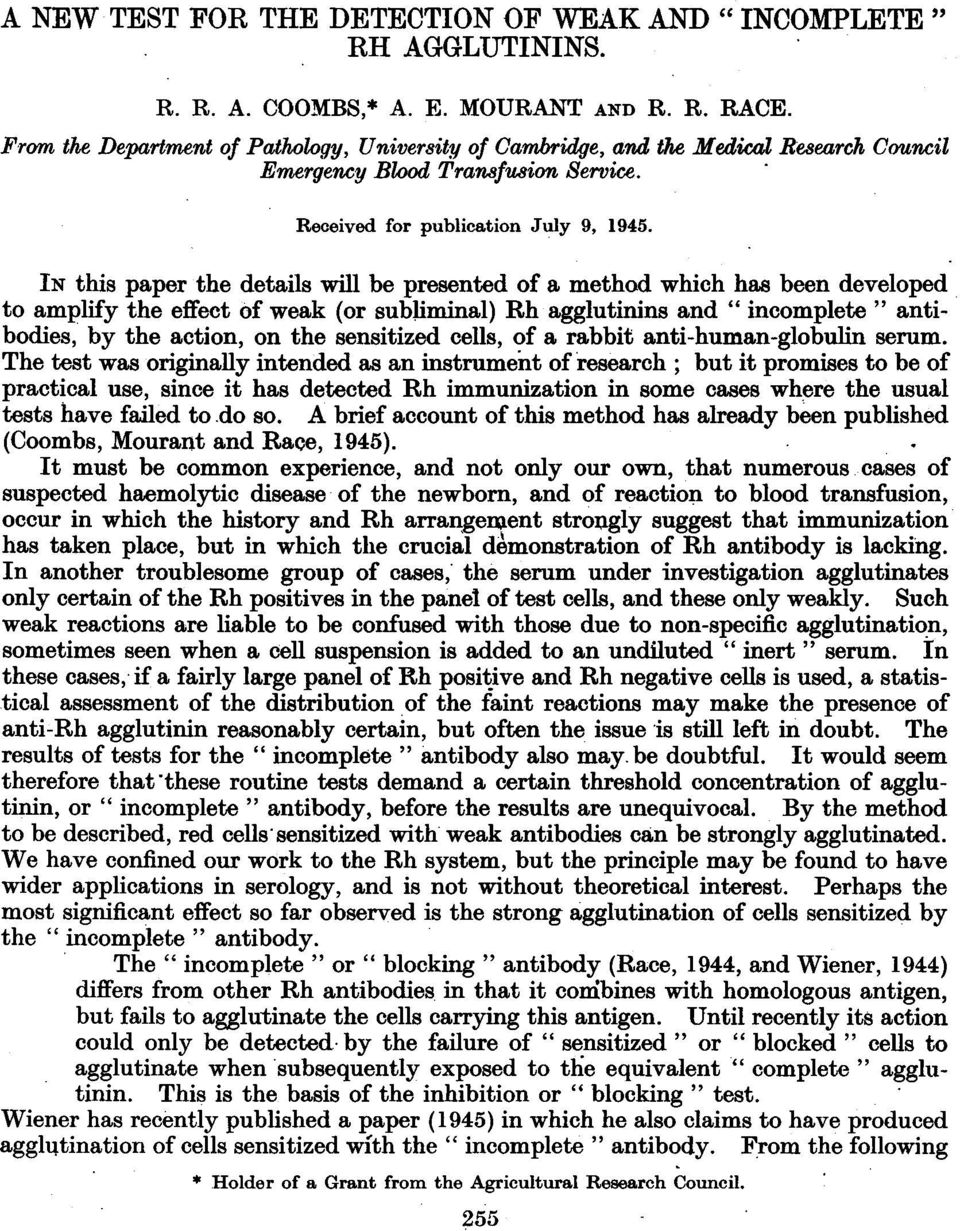Content Type
Store
Profiles
Forums
Blogs
Events
Frequently Asked Questions
Gallery
Downloads
Glossary
Links Directory
Questions
Jobs
Vendors
Posts posted by Arno
-
-
I just answered this question.
-
My ScorePASS
-
-
Hi, Not aware of such kind of interference with nucleotide analog. It would be more likely if it was with convalescent plasma.
-
In which buffer do you resuspend your DTT treated cells? May be these patients do have antibodies against one or several components of this buffer (antibodies against preservatives used in RBC buffer are not so uncommon).
-
Hi Rich,
I am not a clinician but as far as I know IVIG can be given to obstetrical patient in diff. conditions (autoimmune disorders, recurrent pregnancy loss, ...).
I thought about IVIG when I saw the DAT becoming positive plus additional reactions coming up over the time. Anti-A and Anti-B are indeed the most prevalent antibodies in plasma derived products but other specificities of low titre can be present sometimes such as anti-D, anti-K and a bunch of antibodies of undetermined specificity reacting with several to not say all RBCs.
Just a thought that can be doublechecked with the clinician..?
Hereunder is a very great (not recent though) paper to be read and re-read again:
Problems Associated With Passively Transfused Blood Group Alloantibodies
American Journal of Clinical Pathology, Volume 109, Issue 6, 1 June 1998, Pages 769–777, https://doi.org/10.1093/ajcp/109.6.769 -
Is she given plasma derived product (not talking here about anti-D prophylaxis)? Thinking more here about IVIG?
-
I just answered this question.
-
My ScorePASS
-
-
I just answered this question.
-
My ScoreFAIL
-
-
The reaction with the A2 cell would show there is an anti-A (+an anti-A1) so I presume it would rather speak for a B(A). I would expect for a AweakB having an anti-A1 only (?).
-
Could it be a B(A) phenomenon with elevated level of B transferase and decreased activity of the anti-A (and anti-A1)?
-
I believe newborn and maternal red blood cells do not have exactly the same density. So, on 2 different sampling even from the same tube of packed cells, you may have diff. proportions of maternal vs newborn red blood cells. It is the same in case of transfusion, as transfused cells are heavier, depending on the way RBCs are sampled (bottom/middle/top of packed cells) you may have diff. results/pictures (DP, no DP...).
-
I just answered this question.
-
My ScorePASS
-
-
If the reverse cells are ficin treated, it might be the anti-c giving this mf result.
-
https://www.ncbi.nlm.nih.gov/pubmed/30779172
Interesting method developed in Brazil if you get access to the drug.
-
I just answered this question.
-
My ScoreFAIL
-
-
I just answered this question.
-
My ScorePASS
-
-
I just answered this question.
-
My ScorePASS
-
-
To my knowledge no (?). I believe it is more likely due to his disease leading to this hematopoiesis stress and may have evolved over the time (?).
-
Diseases leading to hematopoiesis stress may influence (i.e. weakening) the A, B, H and I antigens expression (less binding of carbohydrate chains). How is his reverse group?
-
Some good materials here as well => https://www.bbguy.org/2016/06/17/want-g-wiz/
-
I just answered this question.
-
My ScorePASS
-
-
I just answered this question.
-
My ScorePASS
-
-
I just answered this question.
-
My ScorePASS
-
-
I just answered this question.
-
My ScorePASS
-
-
I just answered this question.
-
My ScorePASS
-



Positive Antibody screen but negative antibody ID panel
in Transfusion Services
Posted
In addition to what has been nicely explained by Malcolm, it could be as well an example of Sd(a++) cell (commonly named "super Sid") reacting with a weak anti-Sda. The Sda antigen is not a LFA (expressed on more than 90% of cells) though some cells "overexpresse" it.
Anti-Sda usually gives weak/DP reactions and can be neutralized using urine (contains soluble Sda substances).
Other weak antibodies may behave the same way, e.g. anti-P1 reacting against "strong P1" cells only.
However, that does not change at all what Malcolm said "I wouldn't expend too much time or energy trying to sort out the exact specificity. In all cases of such an antibody, as long as you cross-match by the same method as you used in detecting the presence of the antibody in the first place, it would be quite safe to give cross-match compatible blood."